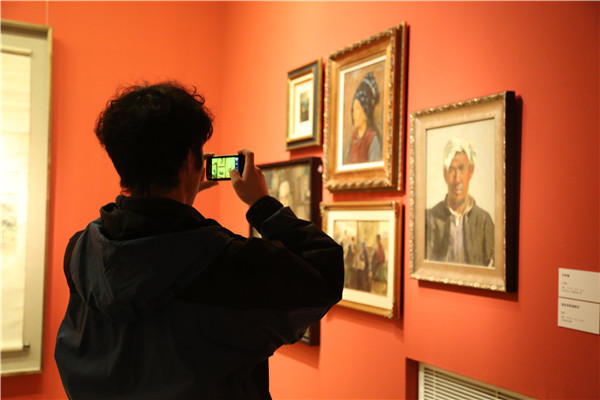 |
|
Exhibits in a recent exhibition at the museum. [Photo/China Daily]
|
In that classroom there was no laughing, no children's frustrated crying out or their long-suffering parents' usually useless attempts to pacify them. There was only silence - accentuated by the rustling of pencils on the textured painting paper. The children were older than 10.
And the works displayed no color but black and white and the millions of shades in between. I later learned that what they were doing was pencil sketch. At the time my mind was a blank canvas open for any artistic influence, and just as easily as the lead of a 6B pencil leaves its mark on paper, the pictures of that room became ingrained in my mind. I told myself and my parents that this was where I belonged.
It was not until last month, when I talked with Wang Wei, founder of Color Edu, a children's art education center in Beijing, that it dawned on me that in being unable to come to terms with the idea of "children's painting", I was perfectly normal.
"We adults tend to give children what we believe they want," he said, referring to the so-called qian bi hua, or simple drawing, a type of cartoonish, stick figure-like drawing style employing simple lines and a loud, motley collection of colors.
"We think children are going to like it, exactly because we ourselves consider the painting style 'childish', meaning less sophisticated artistically, if you like.
"Today I consider the theory superficial and false," says Wang, who graduated from one of China's best art academies and has been in children's art education for a decade.
"A painting made by a young child may often include vivid colors and random lines, but they come directly from their own wellspring of creativity and imagination, instead of some pre-formulated rules. I believe we should give them all these elements - colors, lines and even light. But they should come together in a way that we consider beautiful. And remember: a child's untainted mind is more prepared for beauty than any of us is."


























 Raymond Zhou:
Raymond Zhou: Pauline D Loh:
Pauline D Loh: Hot Pot
Hot Pot Eco China
Eco China China Dream
China Dream China Face
China Face






